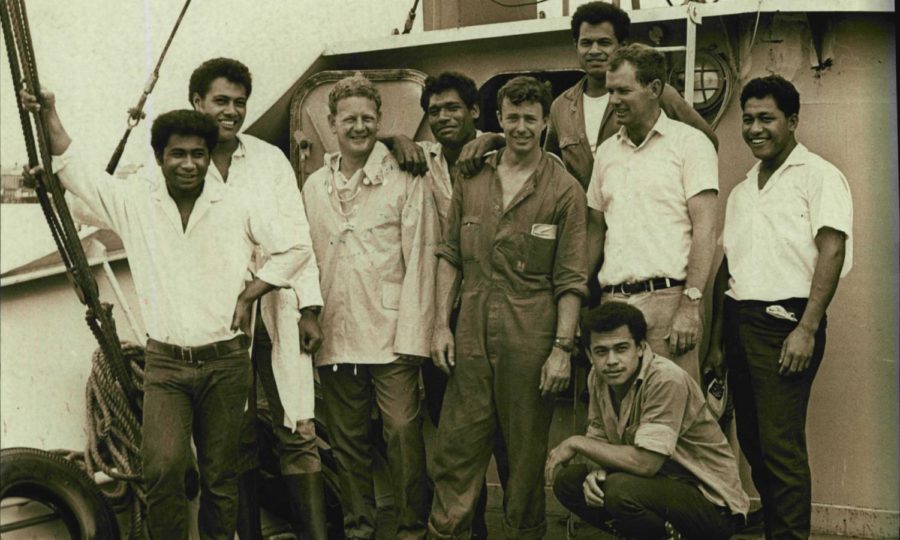Inside the Real Lord of the Flies
April 14, 2021
Six teens, bored with their lives at a strict boarding school in the Pacific nation of Tonga, commandeered a boat to venture to Fiji for their own escapade. A few coconuts, two sacks of bananas, a small gas burner. No map. No compass. Just fair skies and a gentle breeze twirling along the ocean’s surface. But that night the boys made a perilous error: they fell asleep. Caught in a disastrous storm, the Tongan teens were shipwrecked on a remote, uninhabited island for fifteen months; however, their experiences diverged from those in the Lord of the Flies.
William Golding’s Lord of the Flies, published in 1951, tells the fictional tale of British schoolboys marooned on a desert island. Azure seas, sand, perpetual sunshine. No adults. Despite the boys seemingly good fortune, they descend into anarchy and murderous savagery. Their childhood naivete of innocent smiles fade and reveal their innate sinister nature.
Acclaimed as a classic of the twentieth century, this story of the demonic depths of man sold tens of millions of copies and was translated into over 30 languages. Golding’s unnerving tale challenges readers’ notions of humanity’s inherent goodness, painting mankind in haunting hues of cynicism and selfishness. Depicting the sobering reality of human nature, Golding’s grim perspective captivated readers in a time of uncertainty of the post-war world. His words blurred the line of reality and fiction: had the atrocities of the Holocaust been an aberration or is that same darkness of the oppressors lingering in all humans?
Dutch author Rutger Bregman offers a more optimistic take on human nature with his account of the Tongan castaways in 1965. In his quest to find a real life Lord of the Flies and to see what children would actually do if they found themselves on a deserted island, Bregman stumbled across a brief mention of the Tongan castaways. In the obscure story, a group of boys drifting in the Pacific Ocean and drowning in hopelessness, eventually spotted the miniscule island ’Ata and survived over a year on the desolate dot of terrain. The boys at the time were unaware ’Ata was inhabited until slave raids and disease decimated the island’s population. Beneath the soil lurked the devastating history of the Pacific Slave Trade.
The teens’ spirit for adventure transformed into a yearning for Tonga and determination for vitality. With only death in sight and remnants of the past creeping up on their souls, Stephen, Mano, Sione, Kolo, David and Luke—all between the ages of 13 and 16— made a pact to never quarrel to ensure survival. Unlike the boys in the Lord of the Flies, the Tongan teens formed a successful camaraderie.
After 15 months of isolation, Peter Warner, a fishing fleet captain, took a detour from his traditional routes and sailed past ’Ata. That day, Warner observed something peculiar through his binoculars. Peering through his lens, Warner incredulously noticed burned patches on the supposedly unpopulated island. Then he saw a boy. Then six boys. Naked. Long hair cascading down their shoulders. They jumped from the cliffsides and plummeted into the ocean. With Warner’s help, the teens returned to Tonga.
This story recently received international attention with the world eager to know the truth of human nature and movie executives scrambling for production rights. Why now? The boys represent an ideal of what can be accomplished by working together. During a time of global calamity and animosity, we, as humans, need a story as an affirmation of our capabilities to have empathy and compassion. In a dearth of kindness with our nation entrenched in racist practices and the government actively targeting transgender youth, we need a story to convince ourselves hatred is not innate to humanity, but rather nurtured by evil forces. I hope the boys’ message that survival is only achieved hand in hand, resilience united, permeates the American consciousness.
The story of the Tongan boy’s survival and lasting friendship was recently featured in this segment on 60 Minutes.

















































































































































